How did everyone's favorite candy gobbling holiday begin? Read at your own risk to find out.






How did everyone's favorite candy gobbling holiday begin? Read at your own risk to find out.







Atrium Health Floyd — where the brightest minds in healthcare have come together to bring award-winning care to you — will elevate and strengthen the health and wellness of our community like never before.

Tammy Barron knows that not all costumes are created equal. Some Halloween costumes fall victim to poor attention to detail, while others go down in history as a severe lapse of judgment. Then there are the crown jewels that remind you how fun it is to be someone else for a night.
V3 correspondent Jeremy Hulsey stepped out of his comfort zone to bring you an EDM outsider’s firstperson experience at 2022’s Imagine Festival.
Halloween as we know it is a far cry from its ancient pagan roots, but traditions hold fast. You may be surprised where our customs originated.
Proving that a merry heart does good like a medicine, Lauretta Hannon, author of the memoir The Cracker Queen, guides her readers and students on a journey of self-discovery, all the while making them laugh till the tears flow.
Won't you come in and sit for a shell? Traveling Gypsies and Kava Den supports new age approaches for health and well-being.
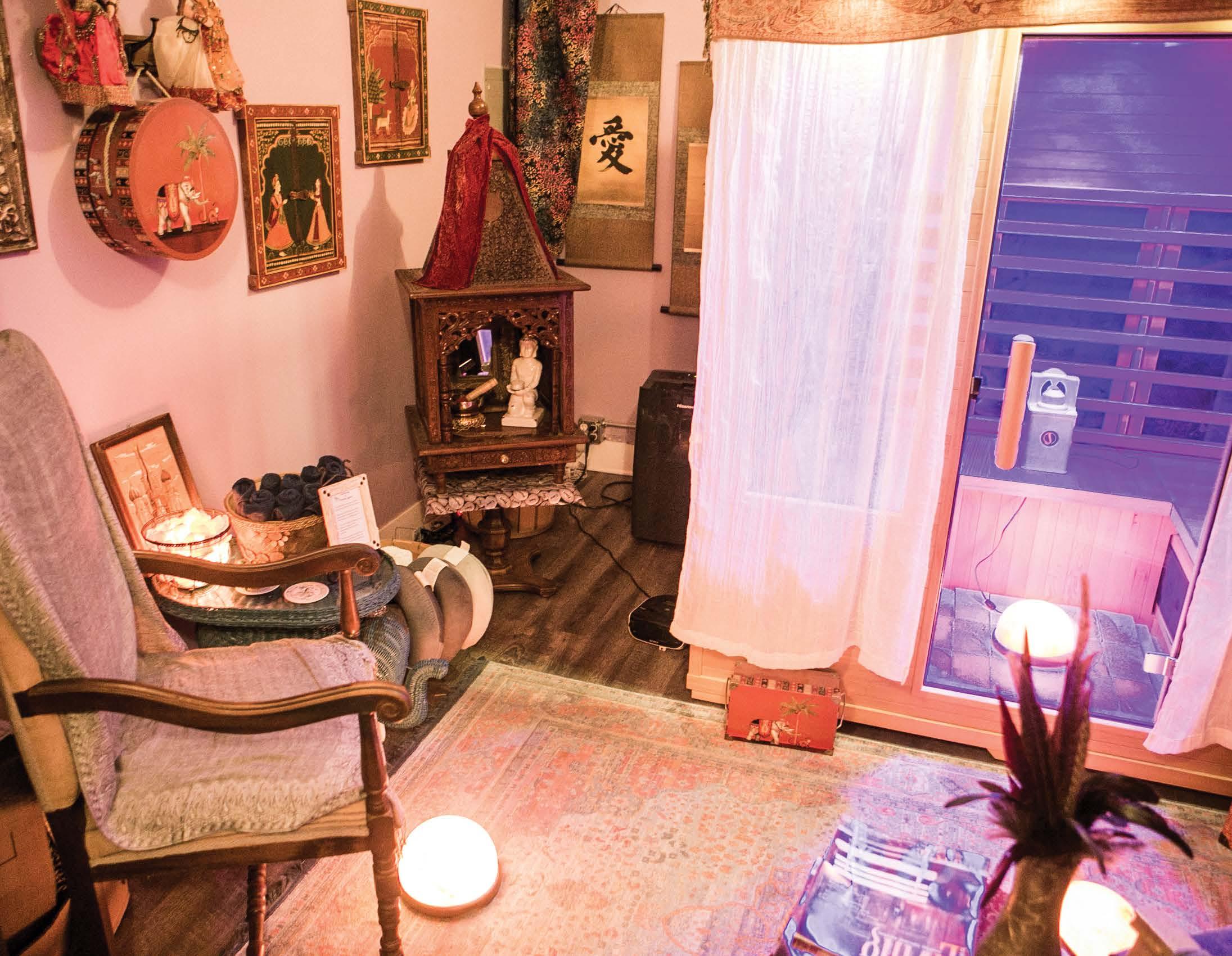
At 42 years of age, I like to think I’m still a spring chicken, but lately, the old man in me is starting to show itself. Aches and pains, grey hair in the beard, no hair on the head… sure those things are part of it, but I’ve always attached the “get off my lawn" mentality with being a grumpy old man, and I have a lawn that’s not even mine I want people to get off of. While I still stand up at concerts, stay up later than I should, and enjoy playing and listening to loud music, I have to face the facts and be at peace with the fact that in some ways, I’m starting to meet the stereotypes.


The lawn I speak of is actually more of a sidewalk because the owners have had to put up signage to keep people from trespassing on their now famous home. To me, it was and will always be the old blue Victorian house a stone's throw from my childhood home, but to most of the world, it is now The Stranger Things House.
I now occupy my childhood home once again and while I can’t say I’ve had the pleasure of meeting my neighbors outside of a friendly wave on the last Halloween B.S.T. (before Stranger Things) they have treated the home with a lot of TLC and I was excited to hear the hit Netflix Series was going to be filming there when rumors started to circulate.
I’ve always been a fan of the show, and that house, so it was awesome to try and envision how they would use it on screen. The physical transformation for filming was amazing and the neighborhood even experienced some electrical fluctuations that were eerily similar to the show while it was in progress. Then Covid hit, fast forward through all of that stuff we are tired of talking about, and finally, the much-anticipated 4th season debuted in June of 2022.
The house was the centerpiece and home of the biggest baddie the show has put forward and almost overnight fans started lining up to have their pictures taken in front of it.
I’d like to make this clear…. I love the show, I love Star Wars and a million other cult-classic pop culture shows and movies… so I get it. I completely understand why fans of the show have to see it and get their picture taken. My friend and I climbed the steps at 710 Ashbury Street in San Francisco to have our picture taken in front of the house the Grateful Dead used to occupy. I not only get it, I’ve done the exact same thing.
In this case, it’s just simply too close to home for me.
The turn off of East 10th Street onto 2nd Avenue has always been a perilous one with blind spots to the left and right and now, there are usually pedestrians sprinting across the road or cars narrowing East 10th into a one-lane road for those entering and exiting. It’s bad enough that I try to go the back way whenever I can to avoid an opportunity for a wreck.
If I carried a cane I probably would have shaken it in anger on more than one occasion.
So, there you have it. I’m whining and complaining about something that I totally understand and appreciate because it affects my daily driving routines. Perhaps I should appeal to Lord Vecna for help? Perhaps I am getting old? Maybe I just need a nap? That last one sounds good. Until next time.


















GIVE ME A THEMED PARTY, AND I AM ON CLOUD NINE. So, it is no surprise that Halloween has a special place in my heart. I get to pull out all my nerdy theatrical tricks and fully commit to being someone else for the night. I must admit some years, I have taken it further than others, perhaps a bit too far. Blame changing times, a lack of self-respect, or little regard for socially acceptable behavior. Reflecting on my past Halloween costumes, I find it interesting how my interests have evolved over the years. There are distinguishable patterns, from childhood rebellion to flat audacity in adulthood. I see very few of my costume choices have been tame. Though as I get older, my perspectives may change, my eagerness to make people laugh does not. Here are my costumes ranked worst to best.
No. 18-20: Grey onesie and a plastic donkey head. My husband wore an inflatable dancing girl costume. I was the star of the show. Use
your imagination. Then, of course, there was the muddy Alabama prom queen and the inflatable male anatomy; sadly, this one was reprised. I rank these three bawdy years together because they made up a series of disgusting couple-inspired costumes. I attribute these blunders to early parenthood; one can only take so many toddlerfriendly stimuli before they crack. Barney and Friends and Paw Patrol, whose wholesomeness was our household soundtrack for three long years, struck a chord somewhere deep inside.
No.17: A brown paper grocery bag with cut-out arm and neck holes. Colored paper feathers glued on to make a decorative dress. My first handmade costume. I was a six-year-old native American. Some things don’t age well. I remember the blisters on my fingers cutting out all the paper feathers I had spent hours coloring. This was my first experience making my own costume from what I had lying around the house. Was
it inappropriate? Yes. Was I an impoverished brilliant mastermind? Also, yes.
No. 10-16: Short skirts, plunging necklines, and goosebumps. Slutty cop, slutty Rainbow Bright, slutty barmaid, slutty devil, slutty angel, even slutty Snow White. I refer to October 31st during my twenties as the years of desperation. I risked hypothermia for a decade because I was so thirsty for attention. Oh, to be young.
No. 9: Colorful crop top, top-knot scrunchie, long nails, and a gold fanny pack. I was Sheneneh Jenkins, Martin Lawrence’s female persona on his 90s sitcom, Martin. At 10 years old, I saw comedy as side-eye and head shaking. I crossed so many appropriation boundaries. I recall now, in horror, at what would never be acceptable by today’s standards. Fun night, but I would have appreciated it if someone would have reined me in a bit.
No. 8: A golden onesie with padded feet and a brown furry muffler around my face. I was the Cowardly Lion posed next to my family, all paying tribute to Wizard of Oz characters. I was four and had no real say in my costume, so I might be bending the rules to include this in the list. However, I have a photo of that night, and it is the only real memory of my early family dynamic before divorce and illness changed everything. The total commitment from Scarecrow, Dorothy, and my brother, Toto, put it in my top ten.
No. 4-7: Mustaches and neck tattoos. I love drag, but I’m not sure why I continuously explore my masculine alter ego as a rough dirt-bag biker. I found the 1989 film Road House highly influential in my ideas of manly men. This costume resurrects itself every few years. In my next life, give me brewskies, babes, and Patrick Swayze teaching me Kung Fu.
No. 3: A bald zombie mask with added red lipstick, a conservative dress, and plastic pearls. I was Mrs. Anderson, my fifth and sixth-grade teacher. She was so ancient I dedicated an old nursery rhyme song to her called “Magdalena Hagdalena.” It went something like, “She had three hairs on her head, one was alive, and two were dead…She had two teeth in her mouth; one went north, the other went south…” I am going to hell. Of course, I never sang it to her face; but the zombie costume was an uncanny resemblance. I’m sorry, Mrs. Anderson.
No. 2: Gold body paint head-to-toe and a golden robe. Heralding another round of drinks with my painted hockey horn, I was an irreverent twenty-one-year-old Angel Moroni. The night was a hit, and I enjoyed my first taste of sacrilegious behavior. I’m definitely going to hell.
No.1: Hawaiian shirt, work boots, wind-swept hairdo, and a goofy walk. I embodied Ace Venture
down to my bones. Having years of practice with Jim Carrey’s one-liners, I pulled out all the stops with this costume. It turned into my favorite day as a middle school teacher. “I’m ready to go in, Coach. Just give me a chance.”
This year I wanted to do something truly terrifying. Top ponytail, a padded behind, and a selfie stick. Hoping to bring the horror of Kim K. to life, I’ll spend the night posing for pictures and talking about myself. It is a tribute to the end of the series Keeping Up with The Kardashians and the celebration that I never watched a single shallow episode.
So, like, “Happy Halloween.”






Author, teacher, workshop leader, and Southern humorist Lauretta Hannon uses her own life story to inspire her audiences and readers to embrace the joy and the pain of their own lives and to take personal responsibility for how they define themselves. She does this with honesty, integrity, and a healthy dose of good humor.
 Text: Paul Moses | Photos: Rob Smith
Text: Paul Moses | Photos: Rob Smith
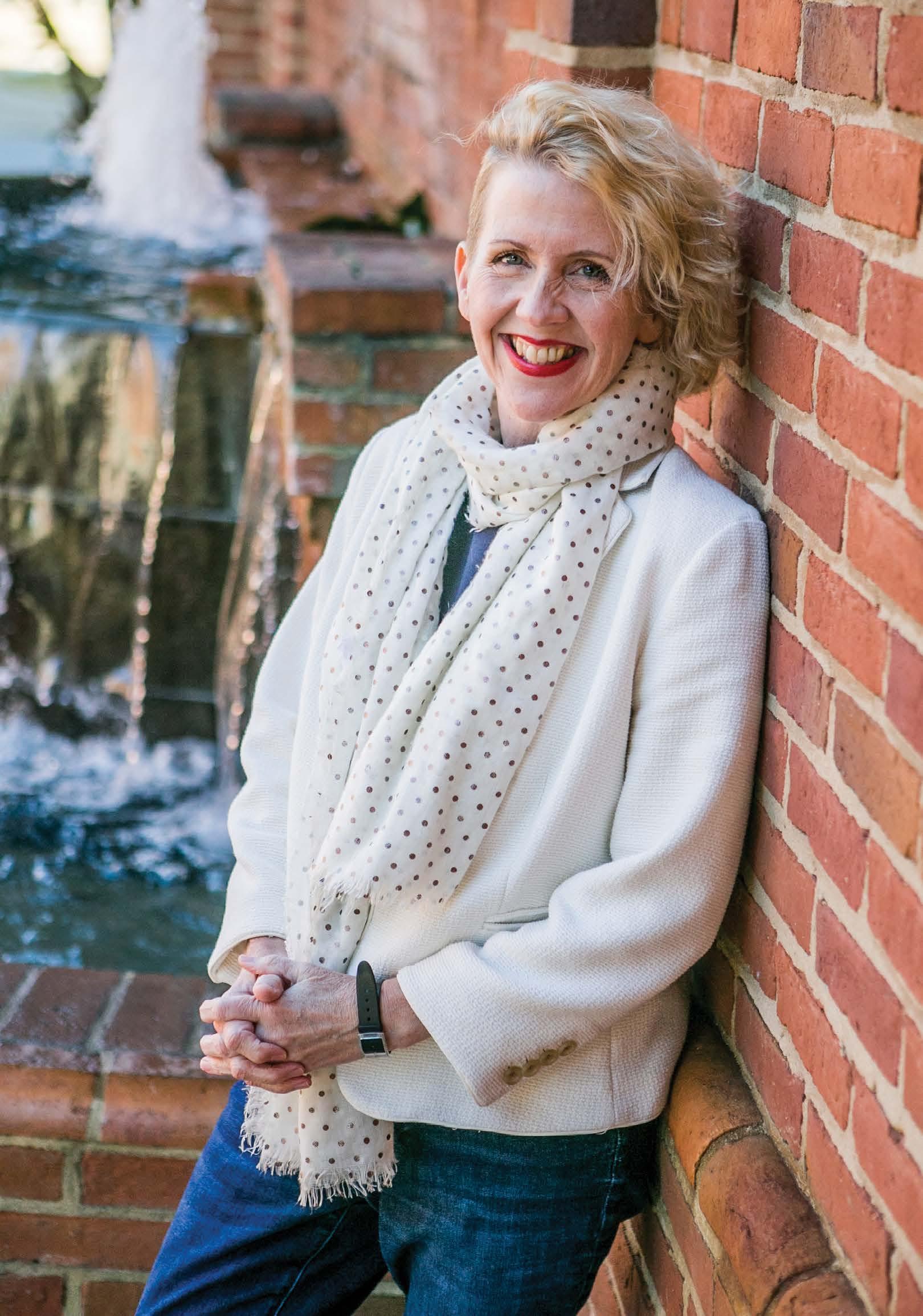
THAT STATEMENT—that Southernism—doubtless expresses the sentiment of many fans of her writing, radio spots, lectures, seminars, podcasts, and workshops. But to stereotype this multitalented woman as a “humorist” misses the bigger picture. Yes, she can make readers laugh out loud as they sit alone, book in hand. She can also bring an audience to the brink of rolling hysterics with her home-spun anecdotes and colorful aphorisms, all told in an authentic rural drawl that she describes as sounding “like cornbread and collard greens.” Funny. She is that. But there’s more to her life and work than just laughs. A lot more. There’s a sort of therapeutic magic in the things she does. It’s medicinal merriment. Her words and style were forged in the crucible of a common human experience: pain. The exuberance rises from—and is tempered by—suffering. That is the bonding factor between herself and her followers. With a pithy economy of words, often hilarious, always poignant, Hannon invites her readers, students, and hearers to identify with her as she encourages them to trust their talent and keep on trying.

Hannon’s childhood was a mixed bag. On one hand, she received a great deal of love. “I knew I was cherished,” she says, “so there was a lot of good there.” On the other hand, she also describes those years as a “torrent of curses.” As she puts it, “My father and mother got together, deeply in love, but each brought a bunch of pain that they hadn’t worked through yet. That became combustible.”
Hannon’s father was a classically trained musician who played an array of instruments but found his true passion in jazz saxophone. When her mother descended into the depths of alcoholism and mental illness, Hannon found her stability in her father. “When I was seven years old my parents got divorced,” Hannon says, “and, unfortunately, my mother continued her
bad habits, and Daddy decided to change some things and be there for me. And he stuck to that.”
Numerous childhood photographs testify to that, showing the little girl huddled close to her father.
“He was my alpha and omega,” she says, “my everything.”
When Hannon was 17, she experienced a devastating reversal of fortune. On the morning of New Year’s Day, her father had a massive heart attack in front of her. He died about an hour later in the ER. “My whole world had just been decimated, annihilated,” she says. In the wake of this loss, she found herself at a dark crossroads. She could follow the way that led to a fear-based life, or she could strike out in a more hopeful
direction. To work through this personal trauma, she turned to something that had become a source of strength for her. Words. “I knew I had a decision to make: I could try to live or I could merely exist and endure. I wrote in my notebook ‘I am going to live.’ Even though I was shattered into a million pieces, I was going to try to do some things that scared me. I would be terrified, but I would do them anyway.”
After her father’s death, a series of experiences alternately bolstered and sabotaged her determination to keep that promise— “I am going to live” —to herself. After high school, she went to Europe for the summer, arriving with only $500 in her pocket. She hitchhiked through Europe, playing her flute on the street to raise funds for her travels as she went. She celebrated her 18th birthday in London. Then it was time for college. By the time she arrived on the campus of the University of Georgia, she considered herself quite the savvy world traveler, and she was ready to dive in and continue her exploration of the world through great books. She studied comparative literature, with an emphasis on the work of Spanish authors.
While applying for grad school, Hannon solicited a letter of recommendation from her favorite professor, an educator whom she idolized. Carrying his sealed letter, she had an unsettling premonition about its contents. Though it violated the protocols of secrecy, she tore the envelope open and read the professor’s words, which were, “Lauretta Hannon is a mediocre writer.” Devastated, she believed him. For the next 15 years, she resisted the desire to pursue a career in writing. She says, “In accepting that one sentence, I absolutely rejected my true calling, violated my dream of being a writer, and dismissed my destiny.”

She explains, “Your purpose never abandons you no matter how hard you try to push it down. When you choose to believe a lie about your very soul, your calling will not leave you alone.”
More than a decade after reading that professor’s fateful, hurtful words, Hannon reluctantly submitted a story to Georgia Public Radio. To her surprise, they accepted it. She was pleased but assumed it was a fluke. It was five years later before she submitted another story, this time to National Public Radio. They too said “Yes”. What’s more, this exposure on the radio prompted a call from a literary agent, who offered to represent her. Hannon was wary, but she listened. When the conversation finally got around to the heart of the matter, it went as follows:

Agent: “Lauretta, do you have a book?”
Hannon: “Sure do!”
Agent: “Great! Can you go ahead and send that to me?”
Hannon: “Well…I haven’t started it yet. But I will!”
At that, the needle on her soul’s confidence meter budged toward optimism. Just a bit. She wrote, “I am not the worst writer in the world.”
Bending to the work, she mined the depths of her childhood and wrote about the love and trials of growing up in a dysfunctional home. The finished product was entitled The Cracker Queen. “When it came to writing my memoir, everyone in my family begged me not to do it,” Hannon says. “They were on a tear, on a campaign to stop me.” She was most worried about her mother’s reaction, knowing that Hannon’s own memories
The bullying power of believing a lieThe Cracker Queen
would not coincide with the narrative her mother had been telling people for years. “Mamma was beautiful, but she was duplicitous,” Hannon says. “She created her own stories about what happened. So, she was going to have to face the truth or disown me.”
Hannon dealt with her apprehension by not showing her work to her mother until it was already at the printers, too late to change anything. “I sent her the manuscript, and she went right away into the one place she could have complete privacy, the loo,” says Hannon. “She sat on the toilet and read it through cover-to-cover. She couldn’t believe what she read.” After that, her mother went to bed but couldn’t sleep. She got back up, locked herself in the bathroom again, and reread the entire manuscript.” When the sun came up, she went into the kitchen, handed the memoir to her long-time partner, and said, “Bob, this is Retta’s book. It’s a hundred percent the truth, and I don’t give a damn what you think.”
Over the years, Hannon’s mother’s admissions and denials ebbed and flowed, but she was always completely supportive of The Cracker Queen.
Eventually, Hannon’s plan to win her mother to her side worked a little too well. She finally had to stop taking her mother to author events, because her mother was so proud of being the Cracker Queen that she always took over the event, holding court for her public. Years later, when Hannon’s mother was fatally ill, she summoned her daughter to her and ordered her to never write another word about her. Hannon just burst out laughing and said, “Oh, Mamma, you’ve made that impossible.”
Typically, a sign of true personal healing is found in summoning the courage to tell one’s own story, saying the truth out loud. Hannon has built a loyal following by doing just that. For instance, at a recent TEDx presentation at the Savoy Automobile Museum in Cartersville, Georgia, she told her tale of pain, passion, and perseverance to a rapt audience. She outlined some of the significant events in her life and explained how they related to her self-talk, what she believed— and came to believe—about herself. She unfolded a storyline that followed the theme of the “I am” statements that she has claimed for herself, for good or for ill, over the years.


“The words that follow ‘I am’ are very important things,” Hannon says. “They can be your sacrament, or they can be your undoing.” For Hannon herself, that has proven true. She has embraced some “I am” statements, others she has rejected: “I am going to live”; “I am a mediocre writer”; “I am not the worst writer in the world”;
“I am an author, teacher, mentor.”
Today, Hannon is on a mission to help others finish their own “I am” sentence, to change the trajectory of their lives through the written word, and to learn to tell the truth about their lives and reject the lies. She leads her students in short, simple, reflective writing exercises that help them foster clarity in their thinking. “They come to me, or I go to them,” Hannon says. “In prisons. Youth detention centers. Accountability courts. Sacred contracts are everywhere.” She tells her story to
give others the courage to tell theirs. “I like being people’s companion on this road of shadow and light. I know where the bandits are hiding on that road, so we can walk it together and get to the treasure at the end.”
For more information, go to laurettahannon.com. Her next workshop will be offered in 2023 at the Rome Area History Center. For details, please email hannonlauretta@gmail.com.


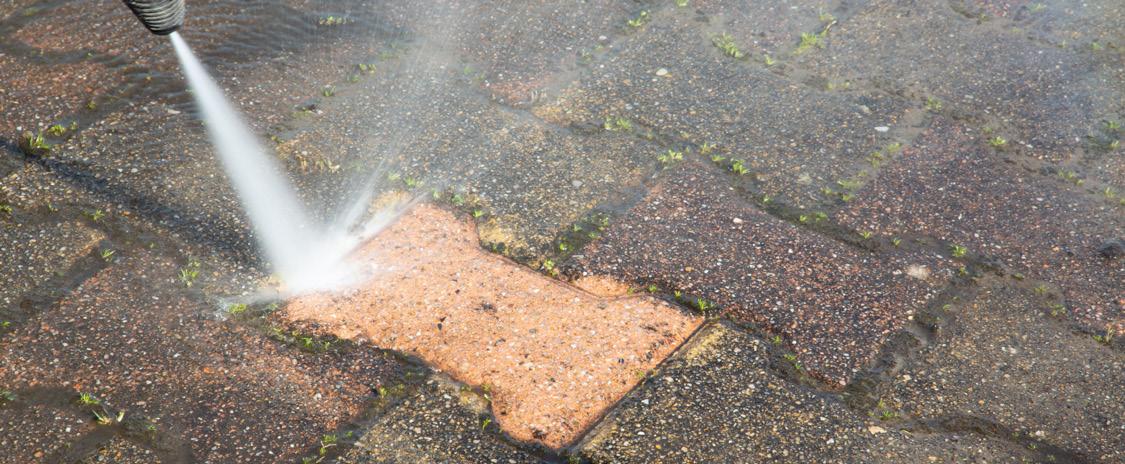











































































































































































































































































For those unfamiliar with EDM (electronic dance music) and its scene, we sent a musicloving newbie and North Georgia native to enjoy the festivities and share thoughts on what The Imagine Festival has to offer.


(electronic dance music), ImagineFest can seem like the type of event that only happens somewhere else, some other part of the country, or even some other part of the world. This year, however, that otherworldly gathering of top EDM acts from around the globe, found its way into our backyard on the grounds of Kingston Downs. Most people from the surrounding area will, undoubtedly, associate Kingston Downs with the Atlanta Steeplechase. The Steeplechase was a staple at the site for over 2 decades, and V3 fans, in particular, will likely harken back to some prolific tent celebrations during those prestigious horse races. ImagineFest and the EDM scene, however, is a horse of a different color.
Electronic dance music is the spiritual ancestor to 70’s Disco, and 80’s Synthpop, but truly started to take on its current form in the ’90s, when techno, house, drum and bass, and trance music crawled out of small clubs and onto main stages. Its popularity grew as top-grossing pop acts started including it in their own music and its radio airplay became more widespread and mainstream. My own introduction to the scene began in the late ’90s, with MTV’s AMP. If you were awake after midnight and needed some good background music for your party, or wanted to watch some interesting computer-generated music videos, then AMP was the place to be. A full hour of uninterrupted music, from a time when the platform was still true to its namesake. Although that show had a very
Text: Jeremy Hulsey Photos: Jason Huynh & Jeremy HulseyFor those not readily familiar with EDM
short run, the genre and subgenres that sprang forth from that experimental time period would eventually coalesce into the more refined and polished version that we know today.



I began this year with a simple goal in mind; to do new things and try new experiences that I wouldn’t normally be into. I grew up in the ’80s; the true definition of “latchkey kid” and full-on Generation X. I saw my first concert in 1996 at the age of seventeen. From that day forward, I knew that I wanted to go to every single concert that I possibly could get to. 26 years since that fateful show, and I've kept that promise to myself. I’ve been to hundreds of different shows and seen acts from almost every genre and

subgenre imaginable. A packed room, arena, or amphitheater feels like my home. I attended the first 2 festivals of Bonnaroo and countless other festivals during that time. One festival that sticks out in my mind, though, is Counter Point. It too was held at Kingston Downs, and I remember thinking how perfect that spot was for a major live concert event.
In February, my lifelong friends and consummate hosts, Dan and Heather Young invited me to tag along with them to this year's ImagineFest. They are both huge fans of the music and artists, and I couldn’t really say no to the threat of a good time. This would easily be a way for me to step outside of my comfort zone and try
on something new for size. Shortly afterward, my best friend John expressed interest in attending as well. Neither of us were very familiar with any of the artists or the scene in general. For us, this was just an opportunity to step into a new reality and observe how the other half lives. We wanted to see what all the fuss was about, and John wanted to attend an event because of its proximity to our beloved hometown. We both grew up in the area, and though neither of us live anywhere near it any longer, we both still consider it home.
Imagine began on Thursday, but work schedules and other contributing factors didn’t allow our crew to arrive until Friday. County Sheriff's had Hwy 411 medians blocked off for
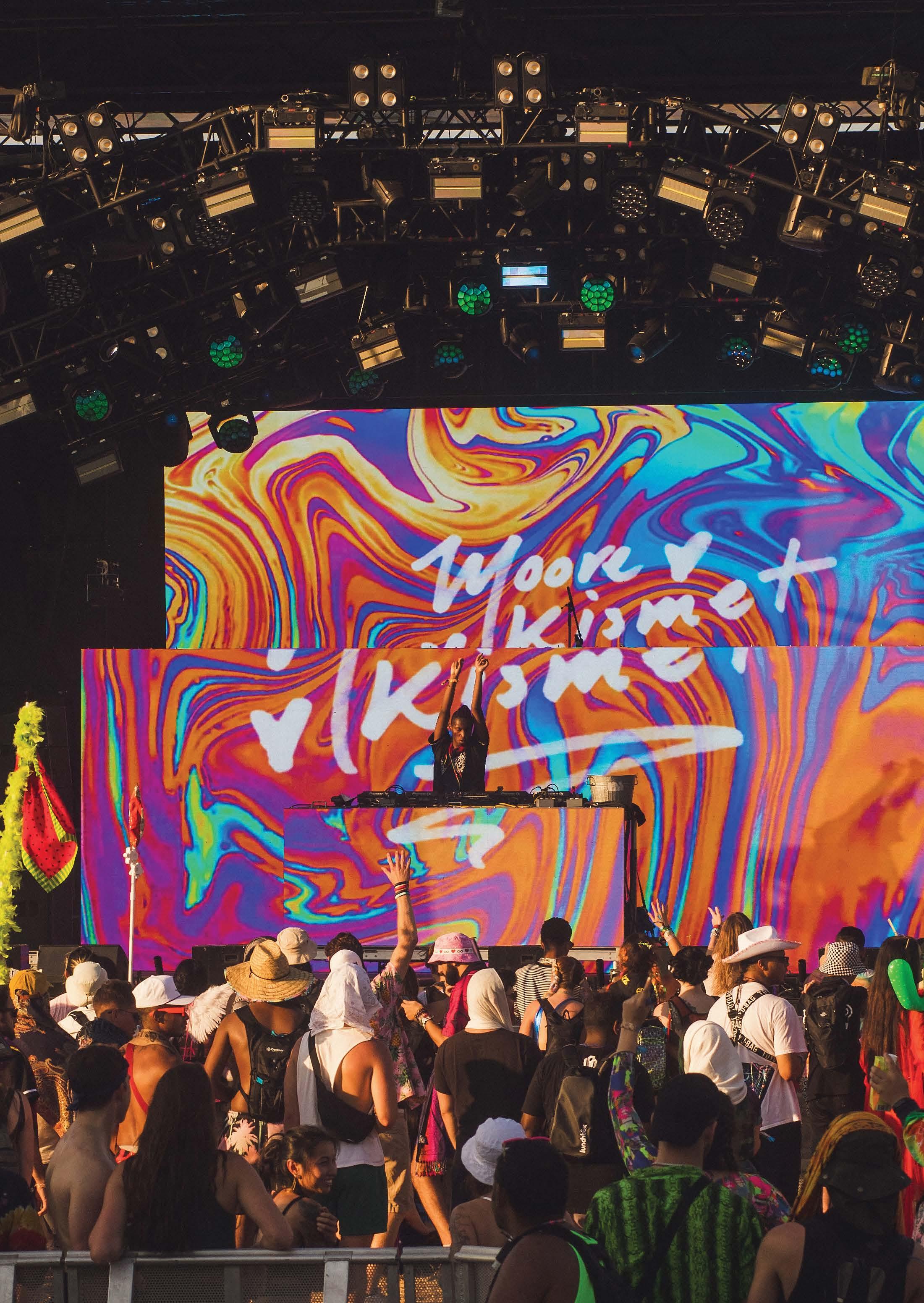
several miles to facilitate a continued flow of traffic. We rolled into the day parking line, and the excitement was building. After about an hour-long wait in line (not terrible all things considered), we parked the car and hopped onto a shuttle bus to transport us to the venue gates. The lines were surprisingly short, and we were in almost immediately. I’ve been through this process before at other venues, and it can be extremely painstaking and, sometimes, infuriating. That wasn’t the case here. Once inside, the minute stress of parking and bussing washed away with the sounds of DJs pumping and bumping dance rhythms and electronic vibrations across multiple stages. There was a main stage where most of the top acts performed, a secondary stage at the other end of Kingston Downs near the old racetrack, and several smaller stages scattered in between. In my opinion, the stage layouts couldn’t have been any better. Keep in mind that this music is extremely loud, but if you were at one stage, its music is all that you would be hearing. There was no bleedover. The sights, sounds, and smells were amazing. Vendors were everywhere, and short wait times to get food and beverages. There were tons of popup tents selling everything imaginable, but the music was the main attraction.
We started the night watching acts on the main stage, Oceania. This is a massive stage with multiple screens, sculptures, and lights (the likes of which you’ve probably never experienced). The only way to describe it is complete sensory overload. Lights exploding, fire bursting from the main stage, lasers shooting across the entire venue, and thousands of people dressed in the wildest outfits you’ve ever seen. The sound was fantastic. One thing that I learned about this type of festival is the closer you are, the better. From about 100 to 200 feet away from the stage, you start to feel the music in your chest. At some point, I felt like the bass and vibrations were taking my breath away, but in a fun kind of way. After that, we headed over to the secondary stage, Amazonia. There was a much more relaxed atmosphere there, with plenty of space to spread out, or sit down and just chill out for a minute. You could really get up close and personal with the music at that stage, and we stayed there for the rest of the evening.
On day 2 we got there slightly earlier, and the hour-long wait to get parked had been reduced to minutes. I got the sense that the staff was figuring out the order of operations and streamlining their process from the prior evening. That night was my personal favorite. We traversed the festival grounds multiple times throughout the evening, and one of our friends counted our steps at 40,000 for the day. Be prepared to do a bit of trekking if
you decide to go. We visited multiple stages, but I kept feeling a gravitational pull towards one stage in particular, Disco Inferno. My friend Dan told me that I must be a House music fan because that stage is geared more toward fans of that subgenre. Whatever the case may be, I ended up staying there while half of our group went back to the main stage and finished off the night with one of the headliners.

The 3rd and final day brought out the heavy hitters, with some of the biggest acts in the scene, and wrapped up the event perfectly. Each day seemed to get progressively better from an attendee's point of view and this gives me tons of hope for the future of the event. Overall, I’d say it was a smashing success, and I truly hope the community continues to support bringing more events like this to the area. I can see major room for ImagineFest to grow at Kingston Downs and get better as promoters, artists, and all of the countless event staff behind the scenes get more comfortable. Speaking from the experience of having seen the transition from the first Bonnaroo into the subsequent ones, I know that this event will only get better with time, like that aforementioned festival did, bringing prosperity to the surrounding communities. I can’t think of a better reason to get people, from all across the country, and from all around the world, to make an annual pilgrimage to our amazing neck of the woods. If the music doesn’t interest you, the experience surely will. I know I've already locked in my tickets for next year's event, and I hope to see some new faces, possibly even yours, at that historic Kingston Downs location, for next year’s ImagineFest.


This slogan and smiling jack-o-lanterns are emblazoned across yard signs all over the Northwest Georgia counties of Bartow, Floyd, Polk, and Gordon. This means Get Pump’d for Kids is back, giving people a fun, safe way to celebrate Halloween while supporting children and families throughout the region. Harbin Clinic is proud to once again partner with Advocates for Children, Gordon County Child Advocacy Center, Polk County Family Connection and Rome-Floyd County Commission on Children and Youth.

“At Harbin Clinic, we focus on leading initiatives that encourage strong, healthy and happy communities,” says Sarah Tuck, senior director of marketing and communications for Harbin Clinic. “Get Pump’d for Kids lets us provide children and families with an exciting and creative way to celebrate Halloween while also giving back to those in need by raising money for local charitable organizations.”
Here’s how to join in the fun. Go to harbinclinic.com/ getpumpedforkids and purchase a Pumpkin Pal (a GET PUMP’D yard sign), place the sign in a friend’s yard, and leave a surprise Halloween treat at the door. Signs can be purchased through the website through October 30th. Proceeds from the Pumpkin Pals go to help the child/family advocacy nonprofits mentioned above, allowing them to continue their fine work. Also—and this is the best part—for every Pumpkin Pal purchased, a special Halloween treat (a family-friendly activity kit and candy) will be delivered to child in foster care. So, each Pumpkin Pal is a gift that gives, then gives again.
The organizations benefiting from Get Pump’d for Kids serve hundreds of children and families throughout Northwest Georgia. Creating caring neighborhoods and strengthening families are a common goal amongst the nonprofits, and fundraisers like this one help bolster their programming and provide important resources to their communities. One of those organizations, Advocates for Children in Cartersville, Georgia, shared how happy they are to be part of Harbin Clinic’s Halloween initiative. Renee McCormick, the organization’s associate development director, says, “Not only is this Halloween initiative exciting for the children buying Pumpkin Pals for their friends, but it reminds the community of our mission and all the resources available through Advocates for Children. And it’s a great way to bring some extra fun to the children under our care.” Serving numerous Northwest Georgia communities, Advocates for Children provides services to children and families who have been the victims of abuse and neglect. They also offer multiple layers of personal care through eight different programs to reduce the incidence of child abuse.
Advocates for Children, the Gordon County Child Advocacy Center (GCCAC), Polk Family Connection and Rome-Floyd County Commission on Children and Youth (RFCCCY) all agree that initiatives like Get Pump’d for Kids provide an important opportunity for families to help bring normalcy and belonging to children and families in need.
"We can not overlook the fact that many local foster children in Rome and surrounds counties do not have a permanent place to call home. We want to ensure that these foster children can see in advance, what it feels like to have Positive Childhood Experiences (PCE)," explains LaDonna Collins, Executive Director
of the Rome Floyd County Commission on Children and Youth. "We look forward to this initiative every year & we are grateful that our community gets involved to support such a worthy cause!"


“We were so excited to be part of this last year,” says Rhonda Heuer, of PFC, “and this is a great opportunity to give back to well deserving children in our community to let them know that their community cares.”

Cindy Gregg, executive director of GCCAC, echoes Heuer, “This is a such neat way to trick-or-treat and give back to the community.”
Those interested in participating can go to Harbin Clinic’s site (address above), click on the Get Pump’d for Kids campaign and select the nonprofit nearest them. There’s a simple info page to fill out and a place to make a donation of $25 or more. Then, pick up the GET PUMP’D yard sign at the organizations’ dedicated pickup location, which is confirmed through the donation process.

Harbin Clinic and these outstanding organizations are surely bringing extra fang-tastic fun to the Halloween festivities this year. Make a difference in the lives of children and families in your neighborhood and purchase your Get Pump’d for Kids yard sign at harbinclinic.com/getpumpedforkids.

Travel through time and explore the most ancient origins of Halloween. You will discover the superstitions of the olde ways and see All Hallows Eve in a new light.

Trick-or-treating, costumes, and parties, our celebration of Halloween is next level. In America, we bestow an entire pumpkinspiced season to getting spooky, wedging it between Labor Day and the Christmas retail purge beginning November 1st.
Last year, the U.S. spent over three billion dollars on Halloween; according to the National Retail Federation, this is a significant uptick in sales from 2019, 2020, and pre-pandemic. Our Halloween festivities have significantly evolved over the last hundred years; they lean more and more toward mass consumerism.
Regardless of how much we spend on our candy and costumes, the tradition of
setting out sweets to appease sprites and ghouls—and the occasional spiderman—has ancient roots. The night of October 31st is still faintly similar to its pagan origins dating over two thousand years ago. Over the millennia, cultural and religious controversy, from Roman conquerors and Catholic Church enterprises, changed how people celebrated Halloween, and the harvest, and honored the dead. Yet, some antiquated traditions remain.
Halloween can be traced back nearly two thousand years to an ancient Celtic fire festival called Samhain (pronounced sowwane). Samhain was the most important fire festival as it marked the beginning
of a new year. The fall equinox on October 31st marks the end of summer and the beginning of the cold dark winter months. For these ancient people, life was hard and harder still in winter, a period often marked by sickness and death. Celtic people believed in the fundamental dichotomy of light and darkness, the ultimate archetype of good versus evil. Light represented life, goodness, and bounty, whereas darkness stood for death, illness, and destruction. The night of October 31st was a time to celebrate the summer’s end harvest and a night to usher in the darkness of winter. On the night of Samhain, the Celts believed that the boundary separating the physical and spiritual worlds vanished, and the dead would walk among the living. Druid and Celtic priests led the
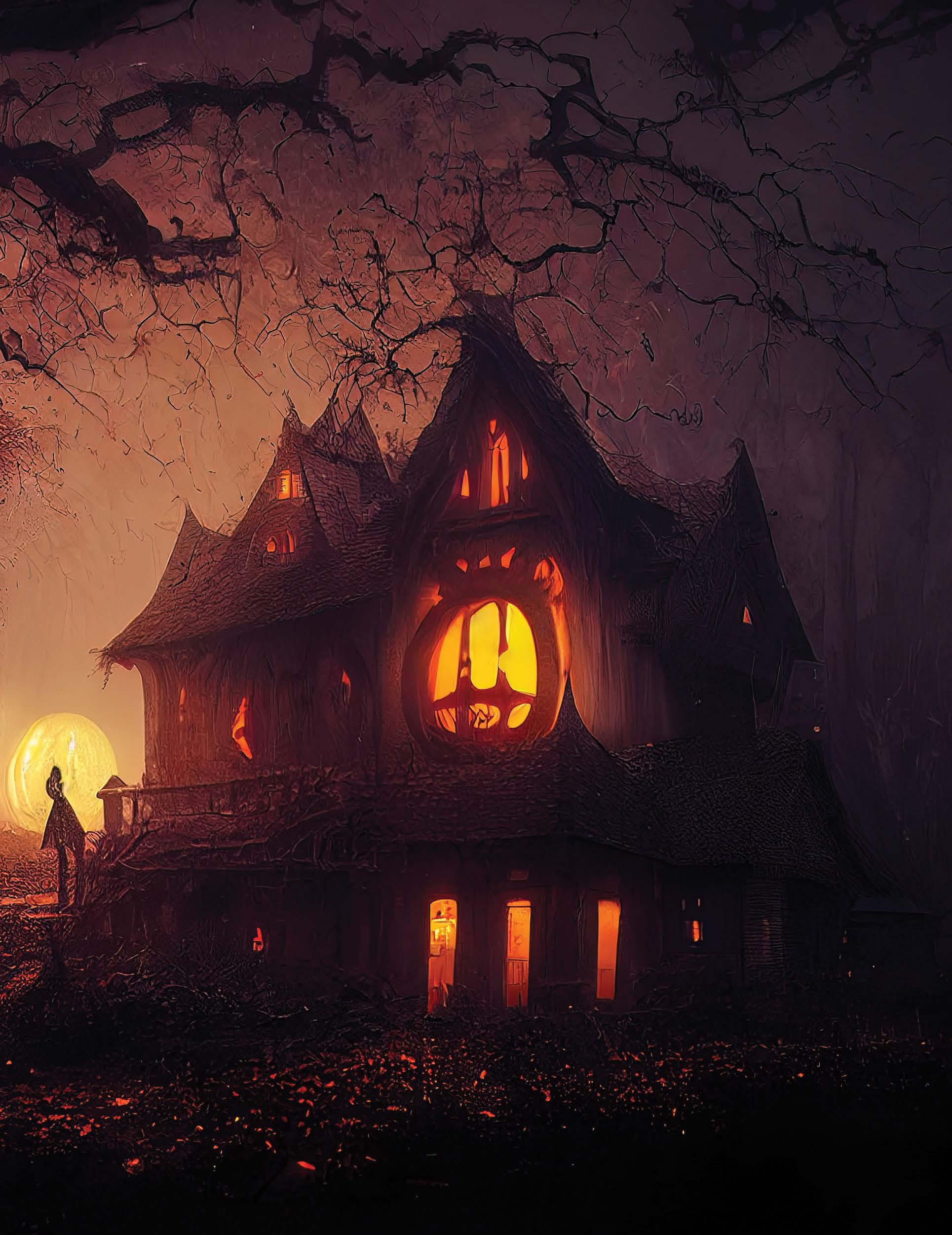
festival. They would call upon each household to extinguish the fires in their hearths. These priests built large sacred bonfires, and the people would gather to offer burnt sacrifices to Celtic Deities.
Many tribes placed offerings of the feast outside their village, gifts to feed hungry loved ones who had died and to dissuade those spirits looking for mischief. It was a magical night that ushered in the paranormal. Many of the Celts would wear masks or animal skins to hide their identities from the roaming spirits, feeling safe to celebrate in anonymity. At the end of the celebration, each household would relight their hearth from the sacred bonfire to help protect them in the upcoming winter.
In 43 A.D., the Roman Empire conquered most of the Celtic territory of western and central Europe. Over the next 400 years, the people of this region adopted many Roman traditions, including
two festivals in late October. Feralia honored the passing of the dead and a special day to celebrate Pomona, a Roman sprite who watched over and cared for fruit orchards, both fused with the fire festival. During this period, historians began to see more depictions of apples, the symbol for Pomona, and the playful tradition of bobbing for apples with Samhain.
During the Middle Ages, 5th -15th centuries A.D., the Catholic Church gained much influence over the region. Pope Gregory I recognized the importance of tradition. Instead of doing away with non-Christian customs, he baptized them. Old pagan temples became new churches, and ancient rites were converted into dedicated Christian holidays. The Pope established November 1st as All Saint’s Day, a day to honor all the saints and Christian martyrs, as an attempt to replace the pagan festival of the dead with a
similar church-centric holiday. The All Saint’s Day celebration was named All-Hallows, turning the traditional night of Samhain into All-Hallows Eve. Eventually to be known as Halloween.
Although centuries of cultural and religious influences have changed how people celebrate Halloween, similarities remain. Our tradition of costumes is a remnant of the original Samhain festivals. People dressed as animals and monsters to avoid being kidnapped by fairies. The Celts were a superstitious group often plagued by supernatural beings who wished mischief. There were many monsters known to roam the night of Samhain: the shape-shifting Pukah; Lady Gwyn, a headless woman in white; impish creatures called the Dullahan (a predecessor to our headless horseman); and the Sluagh who enters homes to steal souls. The scarier and more convincing

the costume, the more likely one wouldn’t be bothered or stolen by these evil spirits.
Trick-or-treating of sorts, too, began in Samhain, with the tradition of “mumming,” which is the costumed door-to-door singing songs to the dead. Macabre carolers would receive payment from each household in the form of cakes to console or entertain these restless spirits. Once again, the church would seize and twist this tradition for All Soul’s Day parades. The poor would offer prayers to families’ dead relatives in exchange for soul cakes, calling it “going a-souling.” Eventually, costumed children took over the practice of going door-to-door for money, treats, and ale.
Pumpkin décor is a modern-day symbol of fall, but not without its ties to the ancients. In the 19th century in the United Kingdom, people often carved into vegetables. It began with an Irish myth
about “Stingy Jack,” a drunkard con man who tricked the devil. After Stingy Jack’s death, he was neither admitted to heaven nor hell but instead destined to roam Earth with a single burning coal in a turnip to light his way. People took to carving frightful faces into turnips to ward off Stingy Jack and other menacing spirits. The large influx of Irish immigrants to the United States in the 1850s brought the tradition of carving jack-o-lanterns to the United States. Some historians, however, argue that pumpkin carving has an older religious meaning. It began as a magical rite of Samhain that ushered protection of the harvest throughout the cold winter and ensured strong crops in the spring. The fire within a jack-o-lantern represented the powerful goodness of the sun, and the carved vegetable symbolized the harvest.
In America, there was a push in the late 1800s to make Halloween a more community-centered
holiday, discouraging traditions that perpetuated a focus on witchcraft and night-walking spirits. Consequently, Halloween has lost most of its mythical and religious overtones. Today, we celebrate with neighborhood parties and costume contests, gluttonous candy consumption, and the occasional horror movie fright. Whatever happened to the spirits that walk among us on All-Hallows Eve? Have they, too, become appeased by our consumer-driven and secularminded celebrations? Perhaps we would be wise to leave goodies on our porches for those ghostly haunts wandering amongst the costumed trickor-treaters and say a blessing for health through this cold dark winter.





















Find yourself restored at Traveling Gypsies and Kava Den. Owners Jim and Sami Gravedoni offer comprehensive, holistic services to help you discover healthier alternatives and spiritual support.

Q: Jim and Sami, what was your inspiration to bring this business to Broad Street?
A: From our first visit to Rome, Georgia, it felt like home. It is a great location to live and open a business. We were ready to escape overpopulated southwest Florida and start a new life in smalltown living. Rome is a place that allows us to build upon a community creating a new family where everyone is accepted.
Q: What feelings do you hope to inspire when customers first walk into your shop?
A: We want everyone to experience an immediate sense of calm, relaxation, and welcome from the moment they enter. Not every day do people go to a store with a bar that leads into a holistic space. So, we feel it's imperative to approach and welcome everyone at the door, us
or our grandpuppy, Vienna. She is the official door greeter. Customers are often sparked with interest when they see our boho retail goods, smell the nag champa incense and doTERRA essential oils in the air, and hear our eclectic blend of reggae, rock, and jazz playing overhead. We often see a look of calm and relaxation wash over our customers' faces when they realize they have come to exactly where they need to be.
Q: Salt therapy promises relief from many ailments, from asthma to acne. How does your salt sauna create an ambiance for healing?
A: It has a different atmosphere from the Kava Den and storefront. Our salt therapy sauna is enveloped in Zen decor and salt lamps, providing a sense of peace. We believe in following the recommended STA (Salt Therapy Association) timeline of 20 minutes for children and 40
minutes for adults. We have various brochures available that explain how salt therapy works. Essentially, there are three primary characteristics of salt: it is very absorbent, antibacterial, and anti-inflammatory. Our halogenerator disperses micro-sized particles of salt into the air for inhalation. The salt can work wonders within the respiratory system, absorbing allergens and toxins, reducing inflammation, and opening airways. The salt's antibacterial properties are also excellent for the skin. We have received a lot of positive results and feedback from customers who regularly enjoy the salt sauna.
Q: People love kava. Can you convince me that it is more than a bowl of dirt?
A: One shell of kava could convince you. In twenty minutes, your lips may experience a numbing sensation, and you will most likely feel calmer and more relaxed. Kava "Piper methysticum" is of the pepper family and is
found in the Pacific Islands. A non-alcoholic beverage made from the root of the kava plant has been popular for over three thousand years in those areas. It is mainly consumed for anxiety and relaxation, although some people drink it to relieve pain and inflammation.

A: We would love to be if we aren't already (laughs). We love traveling, experiencing cultural foods, shopping, and meeting different people. We are from south Florida initially, and now living here in Rome, we feel like gypsies.

Q: Can you describe your journey into holistic healing and meditative arts?
A: We have both pretty much been into healing and meditative arts, but I would say since 2016, we have become more aware and in-tune, and conscious of the holistic and meditative ways. We have implemented these methods into our daily lives; in our foods, supplements, habits, and way of sharing with others. Our significant life change came after a procedure in which an esthetician reviewed all of my cosmetics. We discovered a lot of the ingredients that are in a lot of cosmetics and hygiene products are pretty scary! We did a major overhaul of all our daily products: hygiene products, cosmetics, household cleaners, food, and even spices. My skin looked better. We felt better. We found that we were satisfied with smaller portions of food.

Q: Tell me about your elixirs. Is it just funky tea?
A: Our elixirs are kratom, zero alcohol. Kratom "Mitragyna Speciosa" is a tropical evergreen tree in the coffee family native to Southeast Asia. The leaves are brewed into a tea and served cold. Variation in the leaf, yellow, white, green, or red, determines if it is energizing or mildly sedating. Some claim pain relief from drinking this tea. Our crushed leaves are quality, clean-label products. Our kratom elixirs are brewed, steeped, and mixed with juices, syrups, or creamers to give you

a positive drinking experience. All our products are organic, non-GMO, and clean-label. From our teas to snacks, our motto is, "If we won't consume it, we won't sell it!"
Q: Is all kratom created equal?
A: No! This is a huge part of our daily education. We have found kratom has a bit of stigma in this area. We believe this is from exposure to poor quality, adulterated, or synthetic products and a lack of education. We have met many people in the area who have shared kratom use experiences with us, and not all have come from reputable and tested sources. We serve pure quality products, so our customers have a positive experience. We have seen many positive results in our
customers, from successfully eliminating alcohol from lifestyles to reducing anxiety prescription dependency. This product has been used for years for its medicinal value. We recommend customers research before buying.
We are disappointed when we hear consumer stories of poor experiences with adulterated or synthetic kratom. These negative tales often begin with an unreputable source, like a gas station, and end with poor education on proper usage.
You should NOT ingest a spoonful of kratom and chug some juice (toss and wash method).
Do your research on the benefits of kratom and only buy from reputable sources that offer supply certificates of product analysis.
Q: Your Amethyst Biomat offers a calming approach to pain management.

If I carried amethyst stones in my pockets, would that do the same thing?
A: It may! Amethyst has long been credited with healing properties. Our Amethyst Biomat's
seventeen layers consist of twenty-five hundred amethyst crystals, far infrared rays, negative ions from natural tourmaline, and special layers of fabric interceptors that reduce electromagnetic waves. Its proven results have changed the lives of many. Biomat is FDA certified, and some insurance companies will cover the cost of its purchase. We are pretty excited to announce we recently added the vibroacoustic mat under the amethyst Biomat which delivers a truly fantastic experience. The vibroacoustic mat has sounds that reflect a vibration in the lower back up to the shoulders, simply creating the ultimate relaxation. Our customers love the new addition. Every Tuesday, we celebrate a self-care day and discount the mat and salt sauna use.
Q: Who is your targeted demographic, and what kinds of people frequent your shop?

A: As with all gypsies, everyone is welcome. We are a place of acceptance. To take advantage of our services, you either need to be eighteen years of age or have a parent or guardian present to give consent. Drinking kava or kratom elixirs is strictly available for customers eighteen years or older.

Q: What benefits and overall improvements have you witnessed in the lives of your customers who use your services?
A: Customers express how welcoming and comfortable they are when they hang out in the
Kava Den. They have made quite a community here, meeting up to play games, chat, or relax. Students and remote workers find it a relaxing spot to focus and get work done. Many customers tell us they feel less stressed, notice a reduction in pain and minimalized allergy symptoms like coughing. We've heard some have reduced their dependency on prescription pills and alcohol by using the amethyst Biomat, salt sauna, or simply sipping on the kava and elixirs.
A: We also host sessions that bring local reiki masters and sound therapists. For those unfamiliar, reiki is energy healing from gentle touch or placing hands above the body to help guide the energy to promote relaxation, reduce stress, and promote a healthy balance. Sound therapy uses music to improve physical and emotional health and well-being. We also bring various educational panels. From some of our vendors to local chiropractic offices, we are a space to share information and educate the public.
Q: Do you have any events coming up in October or November that we could highlight for you?
A: Follow us on Facebook or Instagram to keep up with our weekly schedule. October 22nd is Mystical Night on the 500 block, hosted by Traveling Gypsies and Kava Den from 3-11 p.m. October 28th and 29th we are hosting a Time Warp Before and After Party for the Rocky Horror Show, October 31st, we have trick-ortreating. On November 1st, we will celebrate the Day of the Dead. You can also learn more about Traveling Gypsies and Kava Den on our website www.travelinggypsiesandkavaden.com or at 524 Broad St. Rome, GA.
We apologize, if you stopped in during October 1st - 10th, we closed suddenly for a week to go help our friends and family in southwest Florida clean up from the devastating Hurricane Ian that came through and caused so much devastation to the area. To continue to help our SWFL friends and family, we will be accepting monetary donations for them at our location. This will allow them to get back on their feet and rebuild SWFL.

*The information contained in this story is for informational use only and is not intended to provide diagnosis, treatment or medical advice. The products and claims made about specific products or services have not been evaluated by the US FDA and are not approved to diagnose, treat, cure or prevent disease.

At Stonebridge Golf Club, Launchbox features covered bays with state-of-the-art technology to help perfect your golf game. By utilizing Top Tracer shot tracking, as seen on the PGA Tour, Launchbox provides instant feedback on every shot with results sent directly to your phone!


Launchbox offers a variety of games that players of all skill levels can enjoy. You can kick back and have a fun time playing “Go Fish” or play 18 holes on famous golf courses including Pebble Beach. No matter which game you choose, Launchbox is sure to take your golf experience to the next level.
Bring your group out to enjoy bays that are designed for comfort with outdoor furniture, televisions, music and wonderful food and beverage services. Whether you’re a beginner or a professional, Launchbox is built for everyone to enjoy at an affordable price (as low as $5 per person).



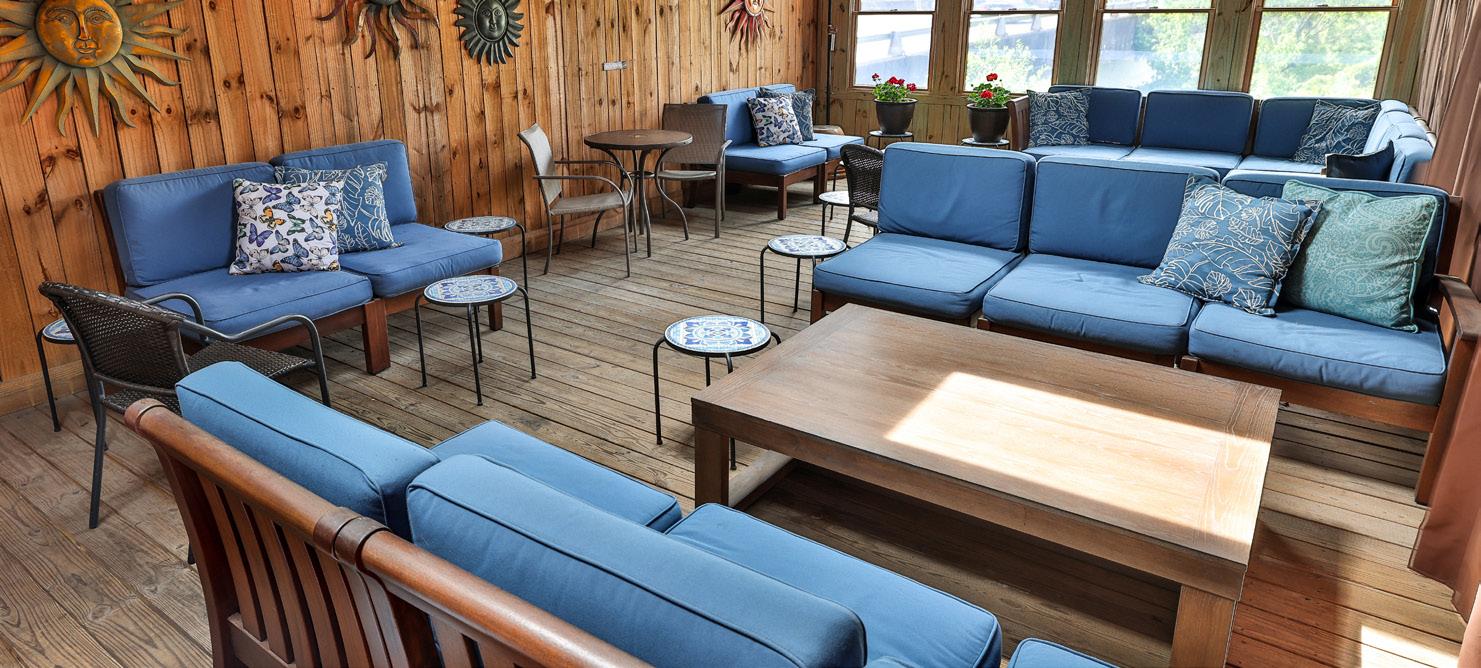






Broad Street Rome, GA 30161
Hours: Mon - Sat: 6pm -
Block Bar

4pm-1:30am
www.mellowmushroom.com 28 S Wall St Cartersville, GA 30120 470-227-7049
Hours: Sun-Wed: 11am - 9pm Thursday: 11am - 9:30pm Fri-Sat: 11am - 11pm

Funky, art-filled chain pizzeria featuring craft beer, calzones & creative stone-baked pizzas.

Broad Street
Hours: Mon-Thur: 11am-9pm Fri-Sat: 11am-10pm Sun: 11:30am-3pm
www.moesoriginalbbq.com/rome 101 West 1st Street Rome, GA 30161 706-622-2977
Hours: Sun-Thu: 11am - 10pm Fri- Sat: 11am - 2am
Moe’s Original BBQ is a Southern soul food revival where great food is served in an atmosphere that is relaxed, spontaneous, yet civilized….well, sometimes.


Broad St
Hours: Mon-Sat: 5am-10pm Sun: 6am-10pm
www.swheatmarketdeli.com 5 E Main St Cartersville, GA 30120 770-607-0067



Hours: Mon - Sun: 11am-3pm
Casual counter serve offering sandwiches,
American comfort food

Hours: Mon - Thu: 11am-9:30pm Fri - Sat: 11am-10:30pm Sunday: 11am-4pm
24 W Main St Cartersville, GA 30120 770-334-3813

Maine Street Coastal Cuisine,


Hours: Mon - Thurs: 11am - 9pm Fri - Sat: 11am - 10pm Sun: 11am - 8pm
fisheries. Our passion is to provide a restaurant free of artificial flavors and ingredients.


from

Let's get pumped to fight the flu and knock out pneumonia! Don't get weighed down by illness. Lift your immunity by: Staying up to date with your essential vaccines: Get your flu shot every year. Ask your doctor if it's time to vaccinate against pneumonia, especially if you're over 65 years old or have underlying health conditions. Washing your hands for at least 20 seconds. Staying home when sick.